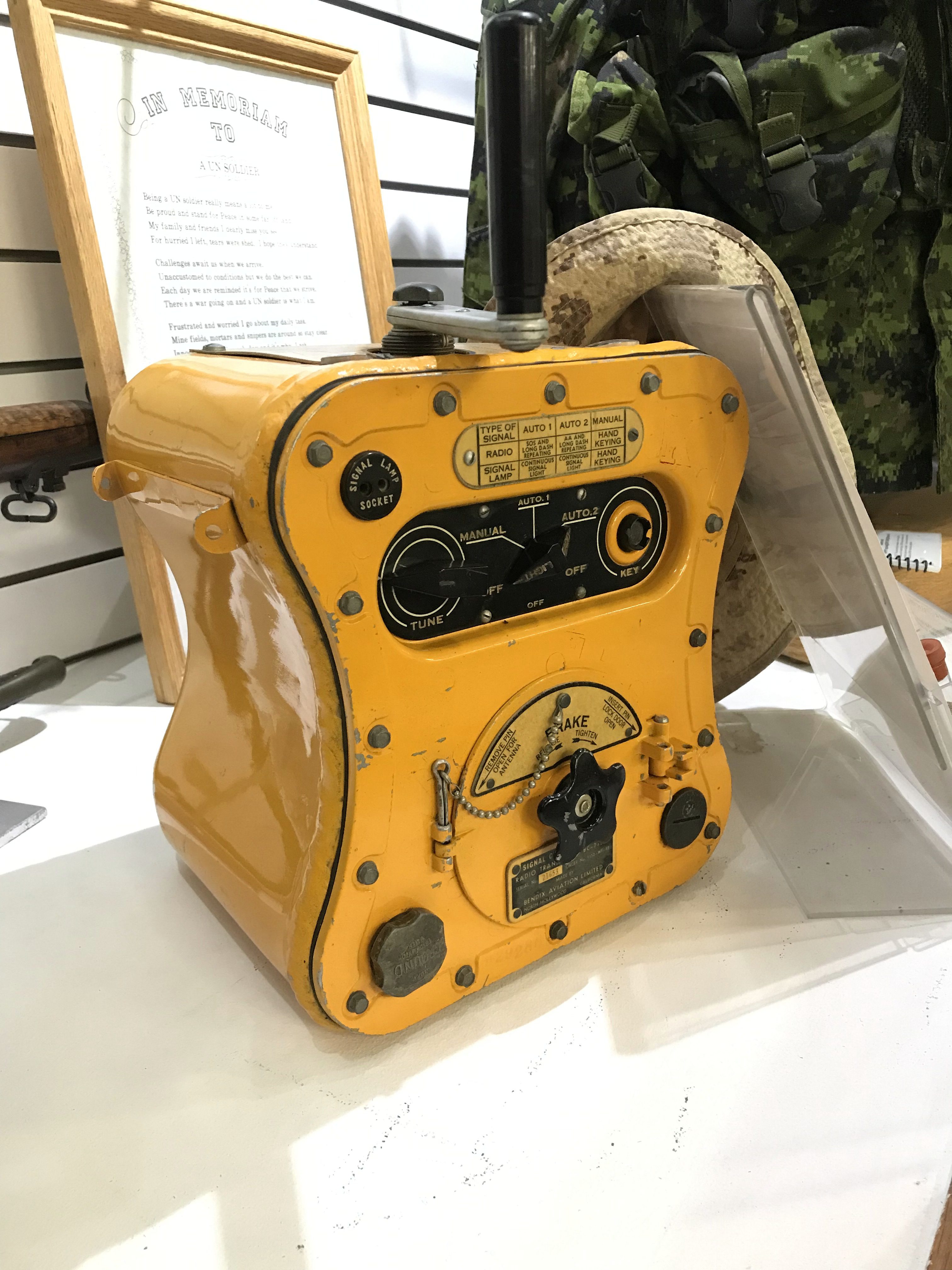Emergency Radio

The Bendix BC-778 hand-cranked emergency transmitter was used from 1942 onward.
The radio was normally carried aboard an aircraft as a package kit, with its own parachute and accessories, so that it could be dropped for survivors, or in case of a crash landing or ditching in water, it could be available to any survivors.
There was no receiver capability.
It is contoured to be held between the operator’s legs with the power supplied by the handcrank at the top.
300 feet of antenna wire are found coiled behind the hinged door at the front.
The kit would contain a kite with which to raise the antenna, or a balloon and a canister of lithium hydride to generate hydrogen for lift (no smoking is recommended in the user’s manual).
It could be used for radio transmission or with a signal lamp.
Set to Auto 1 or 2 different emergency radio signals could be emitted automatically, operable even by someone not trained in Morse code, or in the manual mode Morse signals could be keyed either through the radio or the signal lamp.
At sea, with the ground wire in salt water and the antenna fully extended, effective range would be up to 500 miles, while with a poorer ground like moist earth, the range was limited to 5-10 miles.
http://www.radiomanual.info/schemi/Surplus_NATO/SCR-578A_B_serv_user_AN08-10-94_1943.pdf
Your writing skills are amazing! I really love it! Can you review my website https://www.gdiz.eu.org and maybe you can share tour thought about mine?